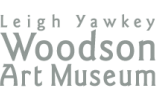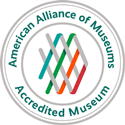Twenty small-scale sculptures from the Museum’s collection can be viewed and studied in a specially designed case located in the lower level of the 2012 addition. Support for Cast, Carved & Cut is provided by the John A. and Elizabeth D. Slayton Fund.
Learn more about each sculpture in the caption beneath each online image.
Exhibition Artworks
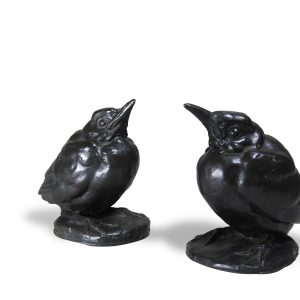
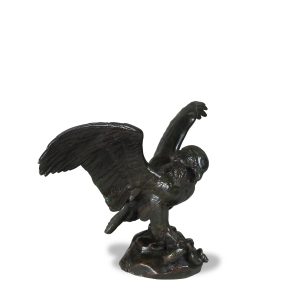
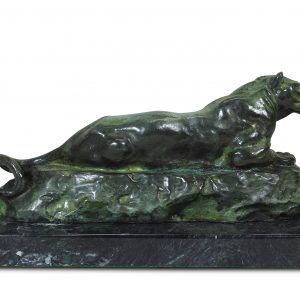
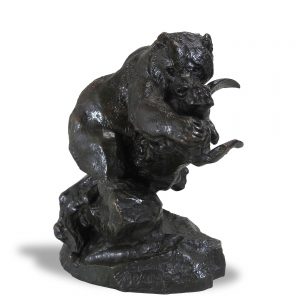
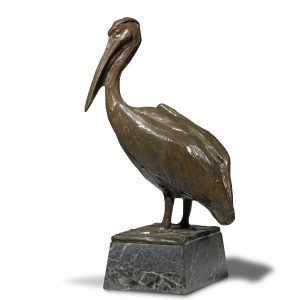
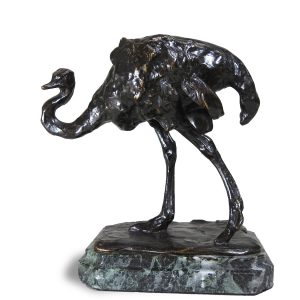
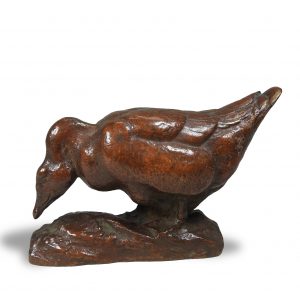
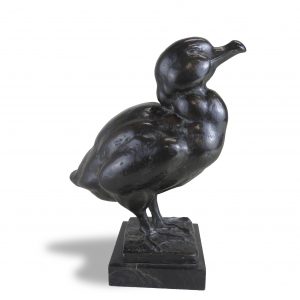
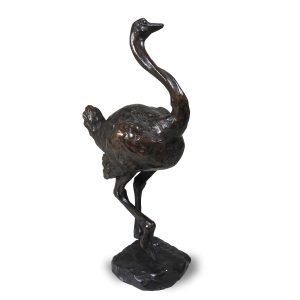
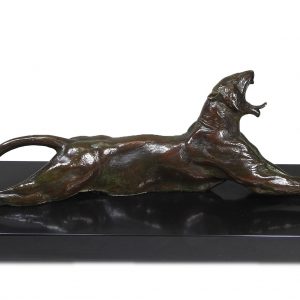
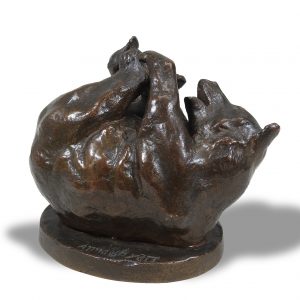
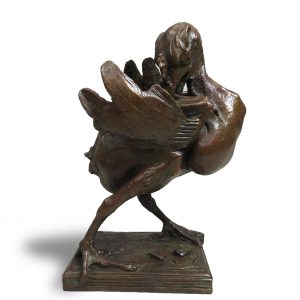
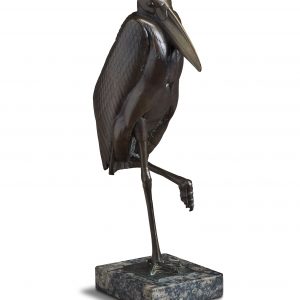
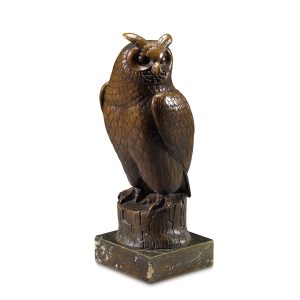
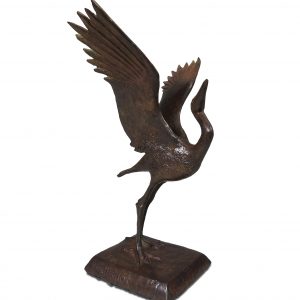
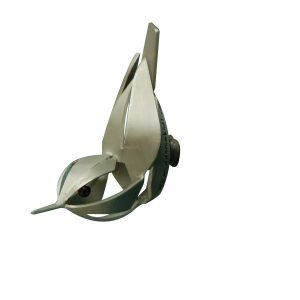
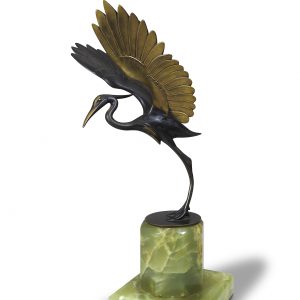
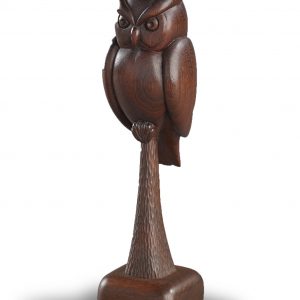
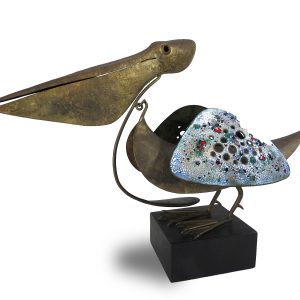
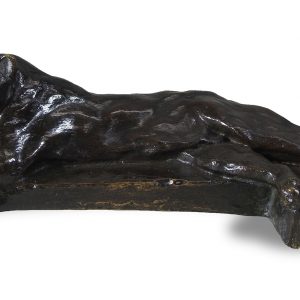
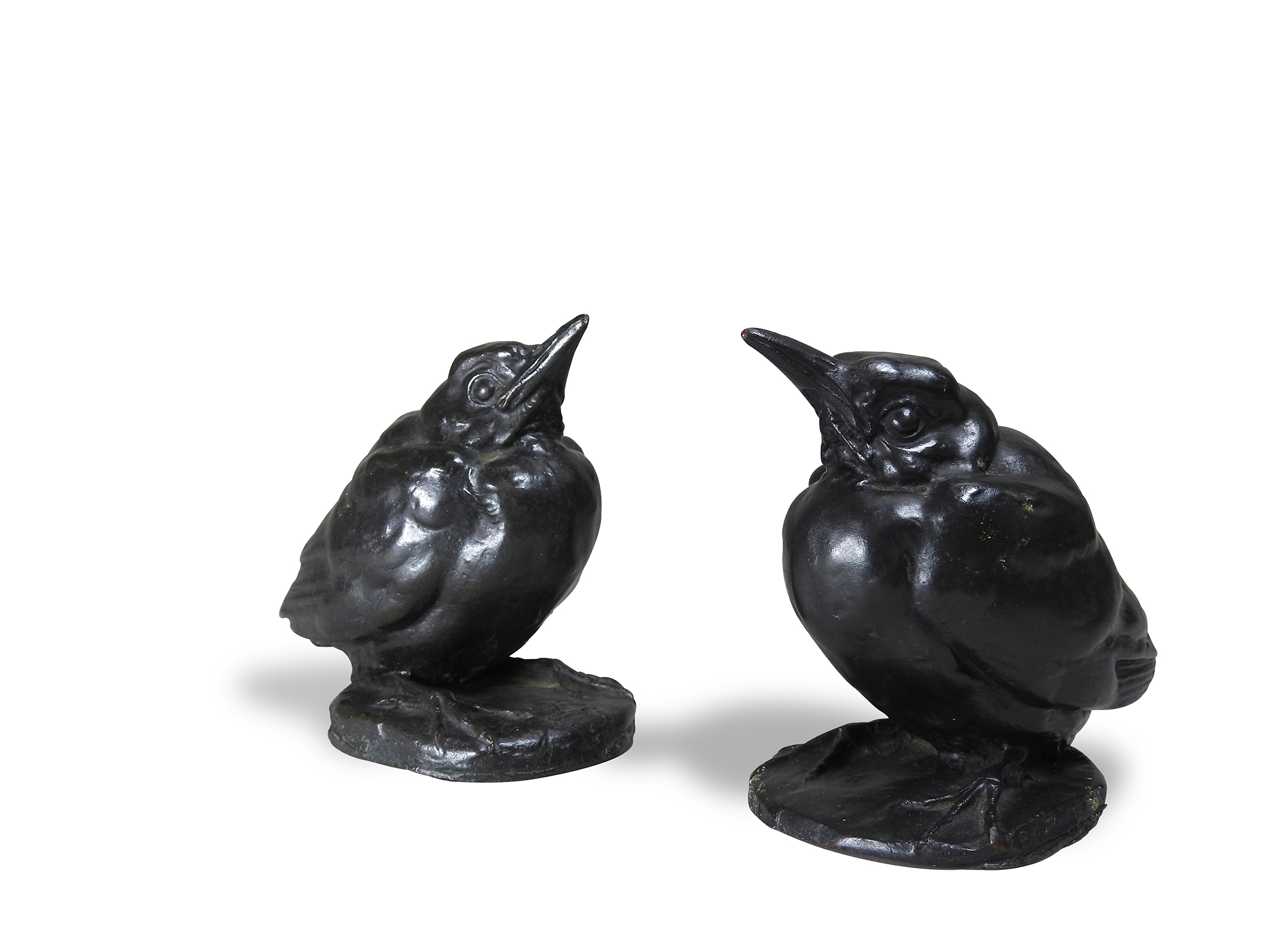
Paul Wayland Bartlett, Pair of Immature Robins, 1925, bronze
Early in his career, Paul Wayland Bartlett specialized in animal-themed sculpture before changing his focus to public portrait and equestrian works.
Bartlett studied in Paris in 1874. He is recognized as among the prominent American sculptors who changed his style from neoclassical to the more progressive Beaux-Arts, incorporating sculpture, bas-relief, murals, mosaics, and other artwork into building designs.
Museum purchase with funds provided by Betsy Kallop in loving memory of her Aunt Marian Dodge
Early in his career, Paul Wayland Bartlett specialized in animal-themed sculpture before changing his focus to public portrait and equestrian works.
Bartlett studied in Paris in 1874. He is recognized as among the prominent American sculptors who changed his style from neoclassical to the more progressive Beaux-Arts, incorporating sculpture, bas-relief, murals, mosaics, and other artwork into building designs.
Museum purchase with funds provided by Betsy Kallop in loving memory of her Aunt Marian Dodge
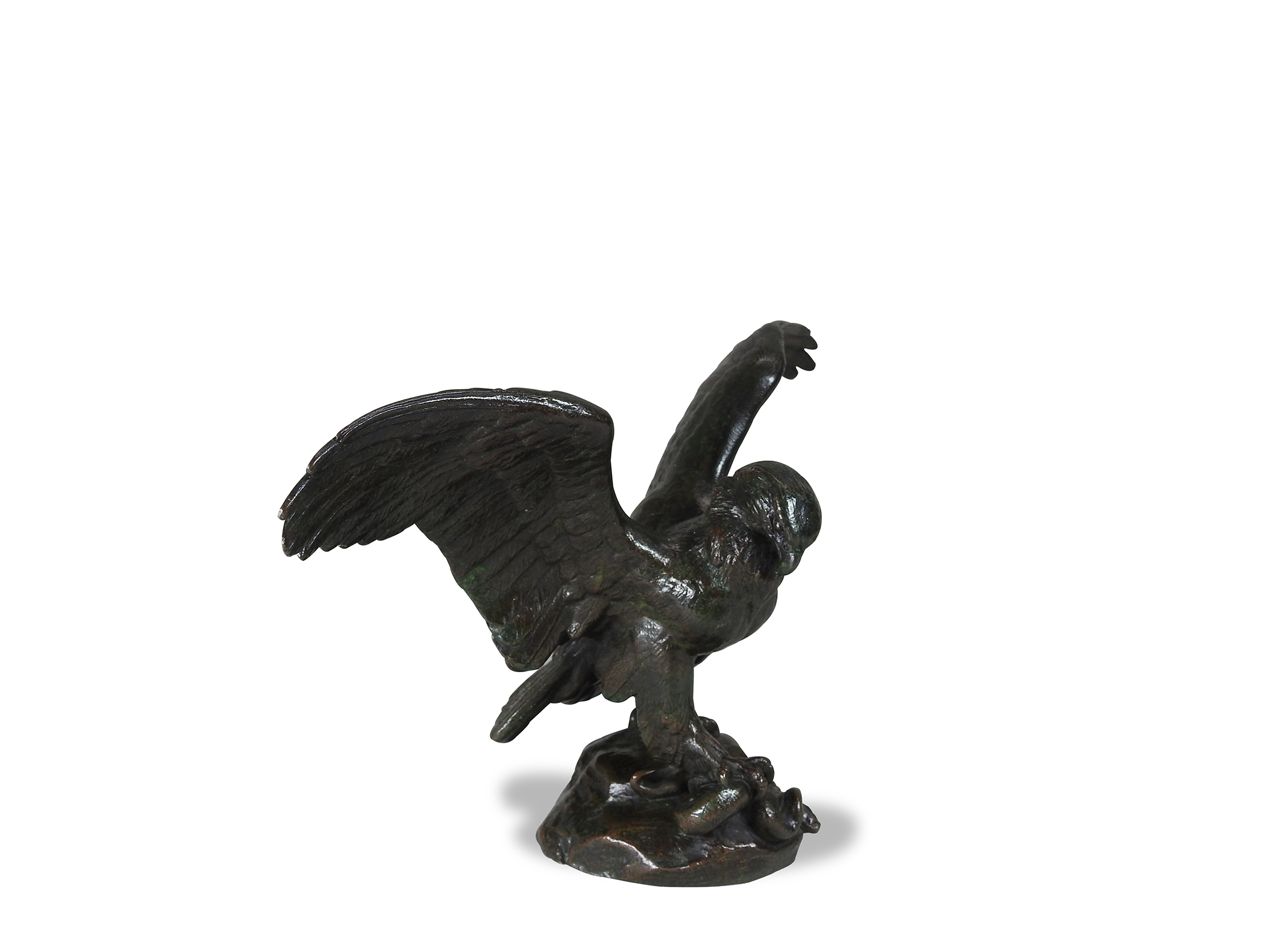
Antoine-Louis Barye, Eagle Taking a Serpent, 1874, bronze
Barye’s talent for rendering dynamic tension and precise anatomical detail is evident in his bronze sculptures, especially those of wild animals struggling with or devouring their prey.
Museum purchase with funds provided by the John and Alice Forester Charitable Trust
Barye’s talent for rendering dynamic tension and precise anatomical detail is evident in his bronze sculptures, especially those of wild animals struggling with or devouring their prey.
Museum purchase with funds provided by the John and Alice Forester Charitable Trust
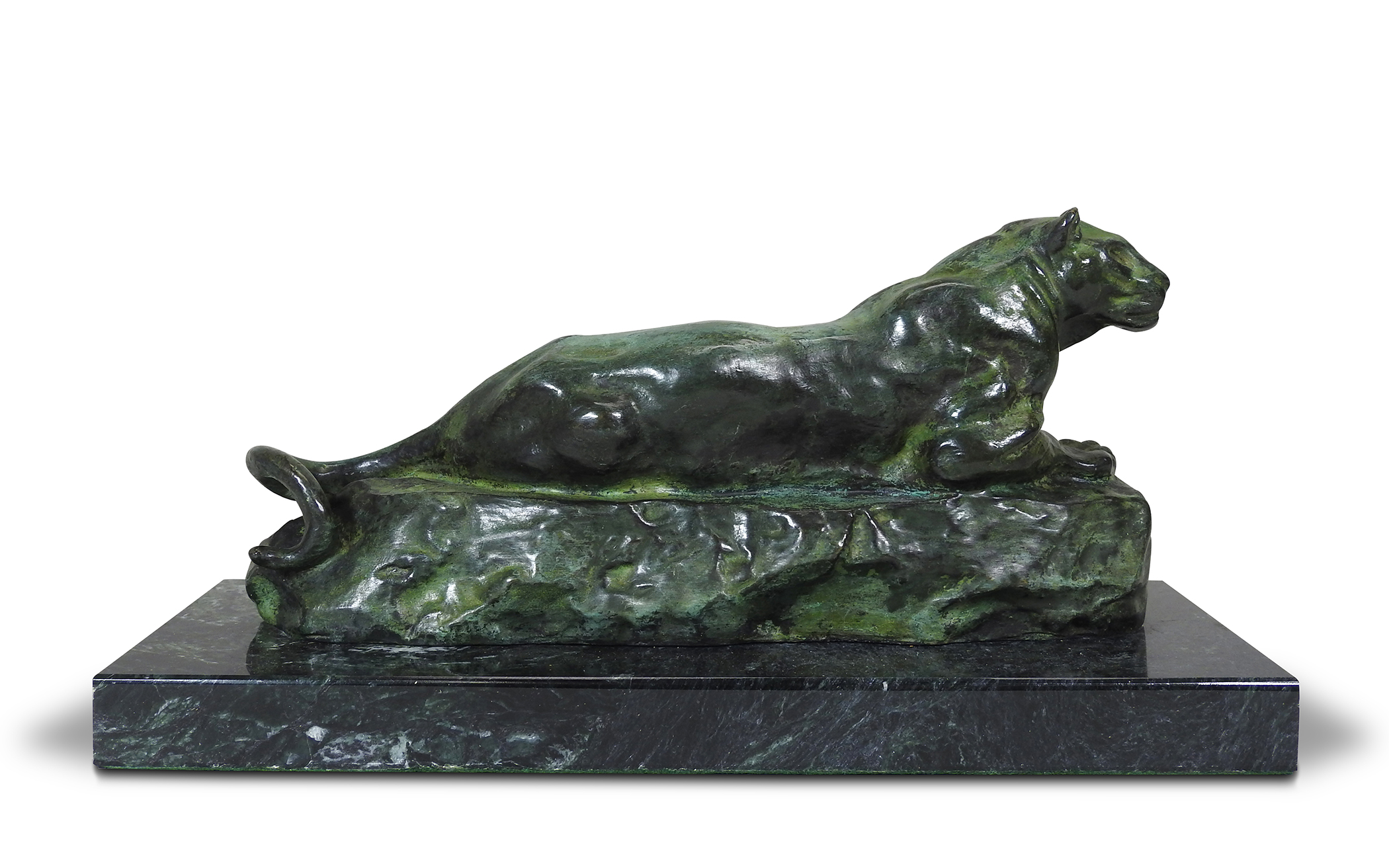
Antoine-Louis Barye, Panther of Tunisia, 1840, bronze
Antoine-Louis Barye exhibited his first animal sculpture in the Paris Salon of 1831. Subsequently, animals became his focus. Critics of the time considered Barye to be the “Michelangelo of the Menagerie.”
Barye’s goal was to achieve realistic representation of his subjects, including portraying an animal’s inner vitality. To achieve accuracy, he studied extensively, even attending animal dissections at the Museum of Natural History in Paris, where he served as the Master of Zoological Drawing from 1854 until his death.
Museum purchase with funds provided by the John and Alice Forester Charitable Trust
Antoine-Louis Barye exhibited his first animal sculpture in the Paris Salon of 1831. Subsequently, animals became his focus. Critics of the time considered Barye to be the “Michelangelo of the Menagerie.”
Barye’s goal was to achieve realistic representation of his subjects, including portraying an animal’s inner vitality. To achieve accuracy, he studied extensively, even attending animal dissections at the Museum of Natural History in Paris, where he served as the Master of Zoological Drawing from 1854 until his death.
Museum purchase with funds provided by the John and Alice Forester Charitable Trust
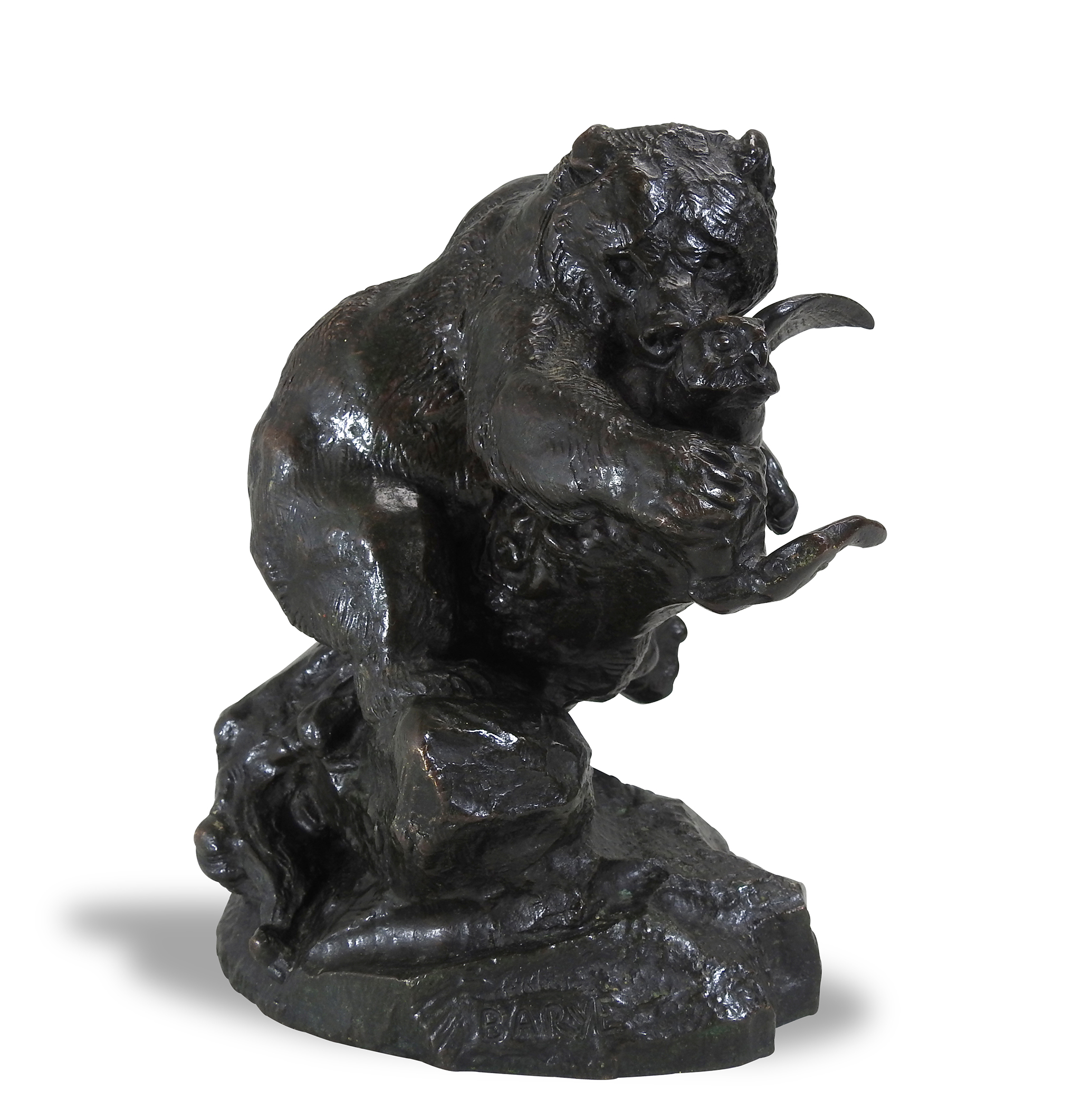
Antoine-Louis Barye, Bear Climbing a Tree, Devouring an Owl, ca. 1850, bronze
Antoine-Louis Barye lived his entire life in Paris. He had minimal formal schooling, instead studying on his own. He trained in metalwork; first with his father a goldsmith, then with a military metal engraver.
Barye made his Salon debut in 1827, receiving critical success at the 1831 Salon, with sculptural groups representing predatory violence in the wild.
Museum purchase with funds provided by the Nancy Woodson Spire Foundation
Antoine-Louis Barye lived his entire life in Paris. He had minimal formal schooling, instead studying on his own. He trained in metalwork; first with his father a goldsmith, then with a military metal engraver.
Barye made his Salon debut in 1827, receiving critical success at the 1831 Salon, with sculptural groups representing predatory violence in the wild.
Museum purchase with funds provided by the Nancy Woodson Spire Foundation
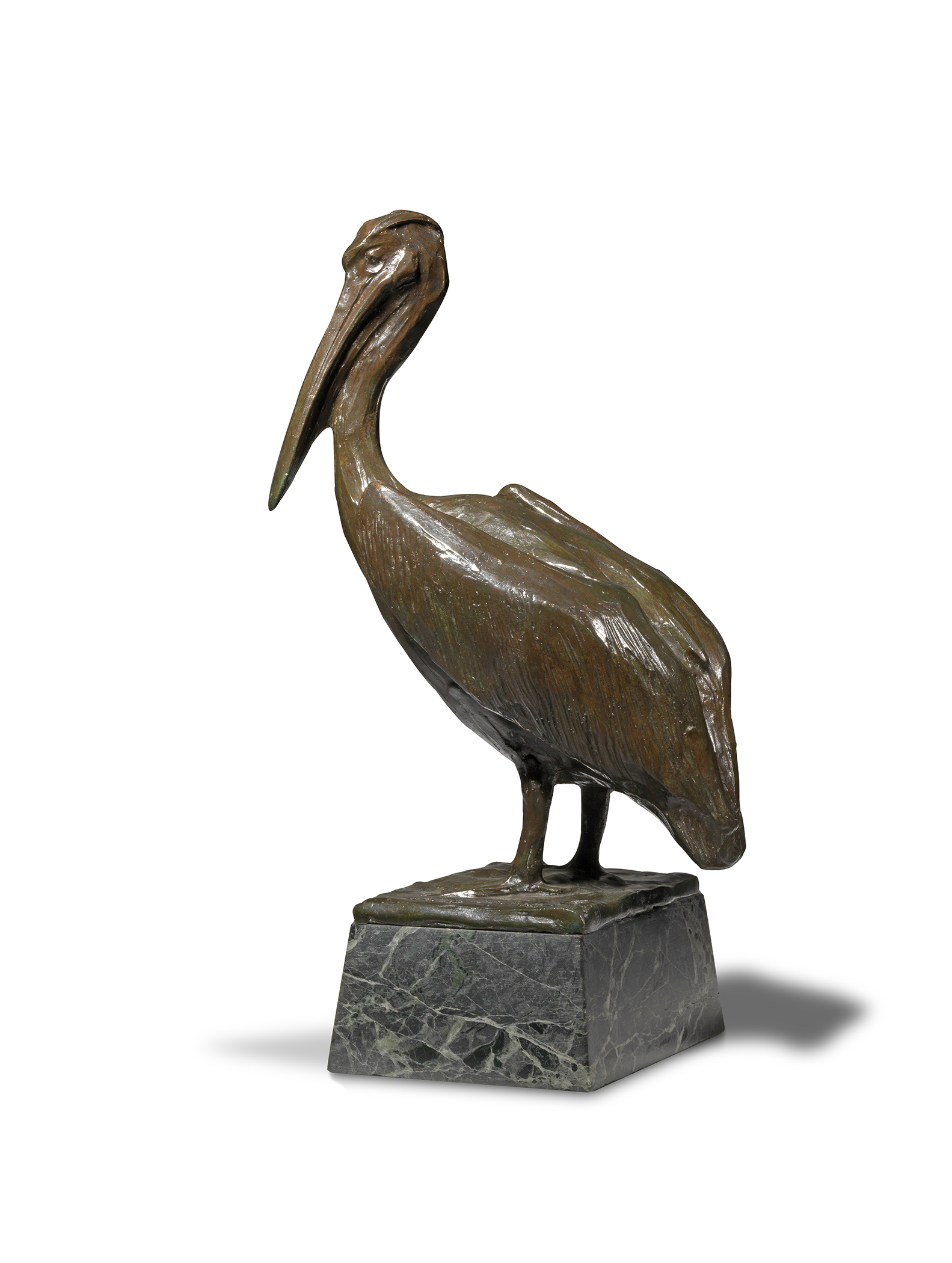
Rembrandt Bugatti, Grand Pelican, 1906, bronze
Rembrandt Bugatti is best known for his bronze sculptures of exotic animals. He spent hours observing and studying animals at European menageries, including the Jardin des Plantes in Paris and the Antwerp Zoo in Belgium. Bugatti’s full talents were likely not realized; he died in 1916 at the age of 31.
Museum purchase with funds provided by the Nancy Woodson Spire Foundation
Rembrandt Bugatti is best known for his bronze sculptures of exotic animals. He spent hours observing and studying animals at European menageries, including the Jardin des Plantes in Paris and the Antwerp Zoo in Belgium. Bugatti’s full talents were likely not realized; he died in 1916 at the age of 31.
Museum purchase with funds provided by the Nancy Woodson Spire Foundation
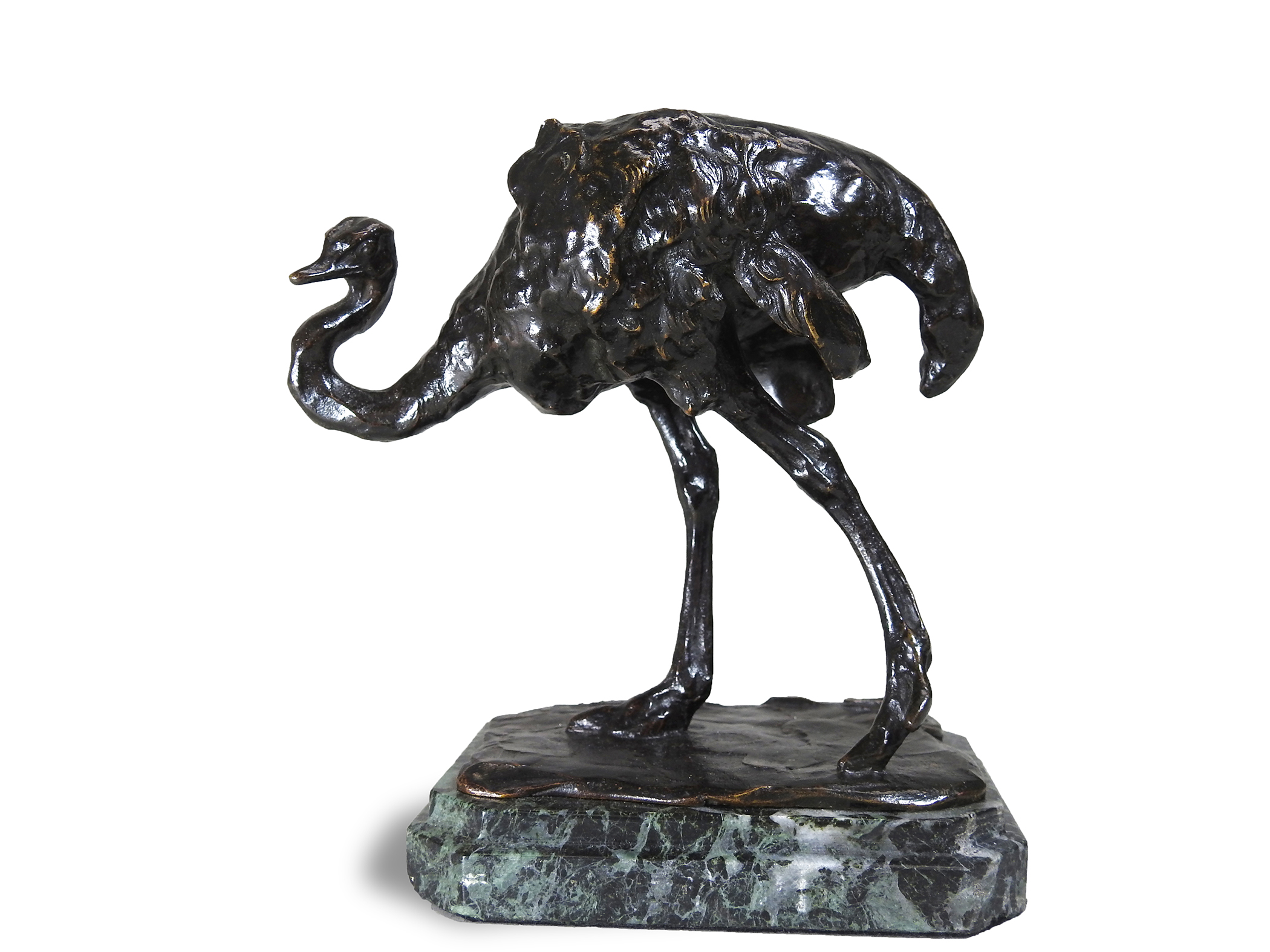
Rembrandt Bugatti, Walking Ostrich, 1908, bronze
As a young man, Bugatti honed his artistic skills while working at Hebrard Foundry in Paris. His love of nature and exotic animals is evident in his sculptures, which capture the graceful movements of birds and animals. Whether stretching, walking, or at rest, each is beautifully modeled, revealing rippling muscles and ruffled feathers.
Museum purchase with funds provided by the Nancy Woodson Spire Foundation
As a young man, Bugatti honed his artistic skills while working at Hebrard Foundry in Paris. His love of nature and exotic animals is evident in his sculptures, which capture the graceful movements of birds and animals. Whether stretching, walking, or at rest, each is beautifully modeled, revealing rippling muscles and ruffled feathers.
Museum purchase with funds provided by the Nancy Woodson Spire Foundation

Laura Gardin Fraser, Barnyard Goose, 1925, bronze
Laura Gardin Fraser designed the Alabama Centennial half-dollar in 1921, earning the distinction of being the first woman to design a coin for the United States Treasury. She studied at the Art Students League in New York from 1907 to 1911, and in 1913 married James Earle Fraser, a sculptor and her instructor.
Museum purchase with funds provided by the John and Alice Forester Charitable Trust
Laura Gardin Fraser designed the Alabama Centennial half-dollar in 1921, earning the distinction of being the first woman to design a coin for the United States Treasury. She studied at the Art Students League in New York from 1907 to 1911, and in 1913 married James Earle Fraser, a sculptor and her instructor.
Museum purchase with funds provided by the John and Alice Forester Charitable Trust
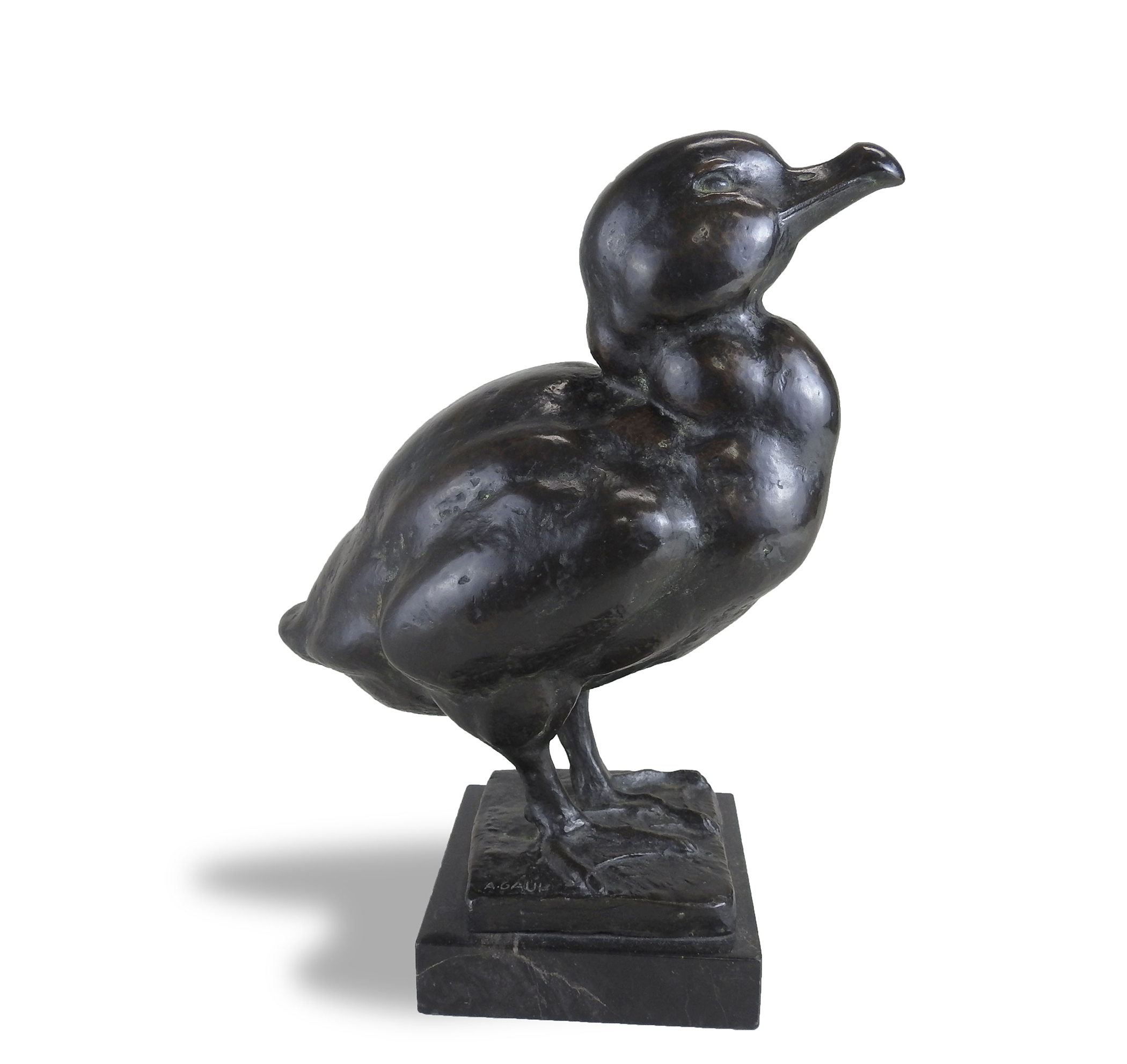
August Gaul, Cygnet, ca. 1908, bronze
Occasionally, a talent is discovered at an early age and cannot be ignored. Such was the case of August Gaul. His sixteen-year art training began at age 12 when he enrolled in the Hanau Royal School of Drawing in Germany. He studied under numerous teachers and experimented with various mediums before focusing on sculpture. In 1890, Gaul acquired a season ticket to the Berlin Zoo. An affinity for animals and the opportunity to draw from life were the catalysts the artist needed to devote his energies to creating subtly detailed bronze sculptures.
Museum purchase with funds provided by the John and Alice Forester Charitable Trust
Occasionally, a talent is discovered at an early age and cannot be ignored. Such was the case of August Gaul. His sixteen-year art training began at age 12 when he enrolled in the Hanau Royal School of Drawing in Germany. He studied under numerous teachers and experimented with various mediums before focusing on sculpture. In 1890, Gaul acquired a season ticket to the Berlin Zoo. An affinity for animals and the opportunity to draw from life were the catalysts the artist needed to devote his energies to creating subtly detailed bronze sculptures.
Museum purchase with funds provided by the John and Alice Forester Charitable Trust
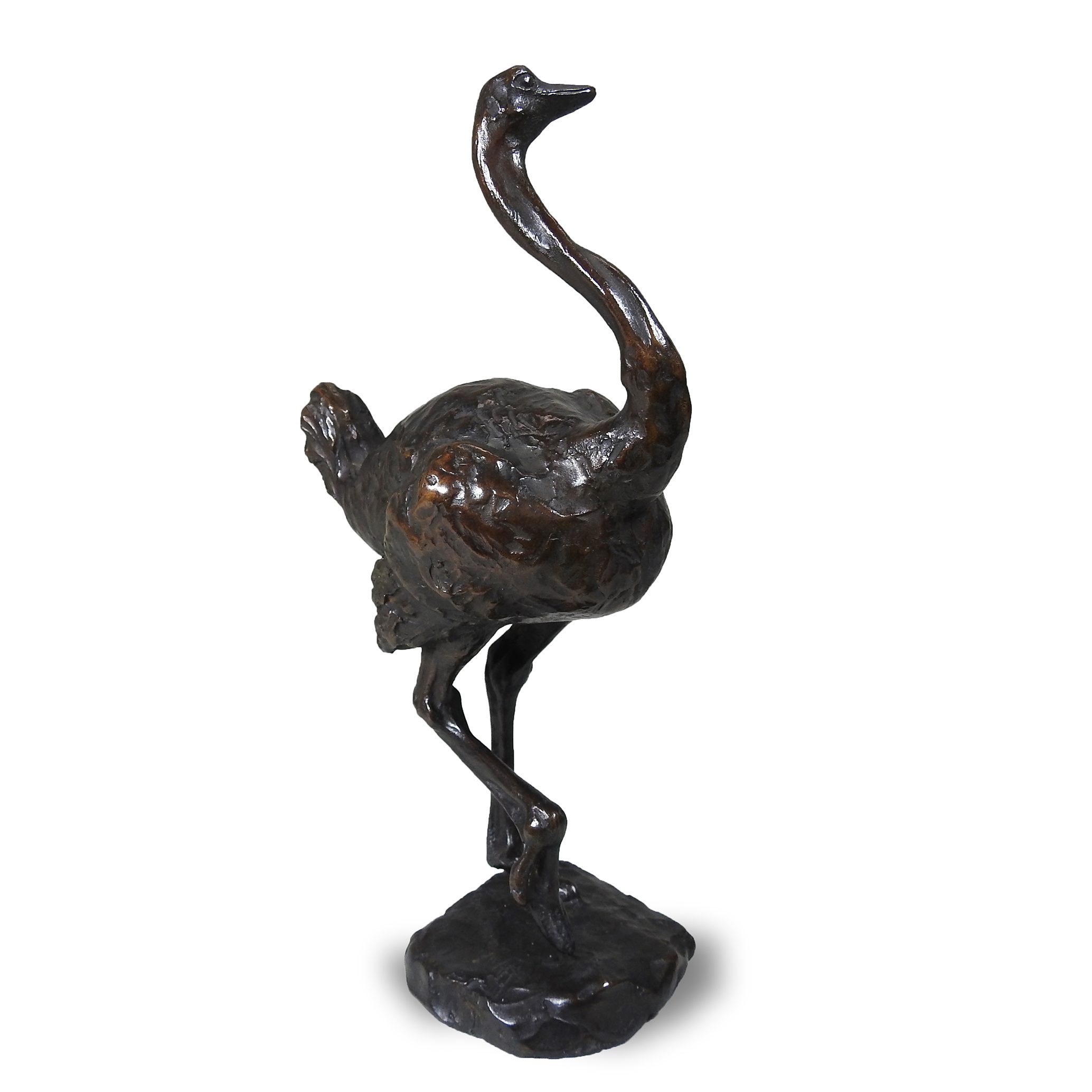
Anna Hyatt Huntington, Ostrich, ca. 1925, bronze
Anna Hyatt Huntington is recognized as a patron of the arts and as one of America’s foremost animal sculptors.
Huntington’s love of animals was encouraged by her father, a paleontologist and professor of zoology at Harvard. Her sculptures capture the uninhibited actions and postures of many types of animals.
In 1931, she and her husband, Archer Huntington, founded Brookgreen Gardens, the first public sculpture garden in the United States.
Museum purchase with funds provided by the John and Alice Forester Charitable Trust
Anna Hyatt Huntington is recognized as a patron of the arts and as one of America’s foremost animal sculptors.
Huntington’s love of animals was encouraged by her father, a paleontologist and professor of zoology at Harvard. Her sculptures capture the uninhibited actions and postures of many types of animals.
In 1931, she and her husband, Archer Huntington, founded Brookgreen Gardens, the first public sculpture garden in the United States.
Museum purchase with funds provided by the John and Alice Forester Charitable Trust
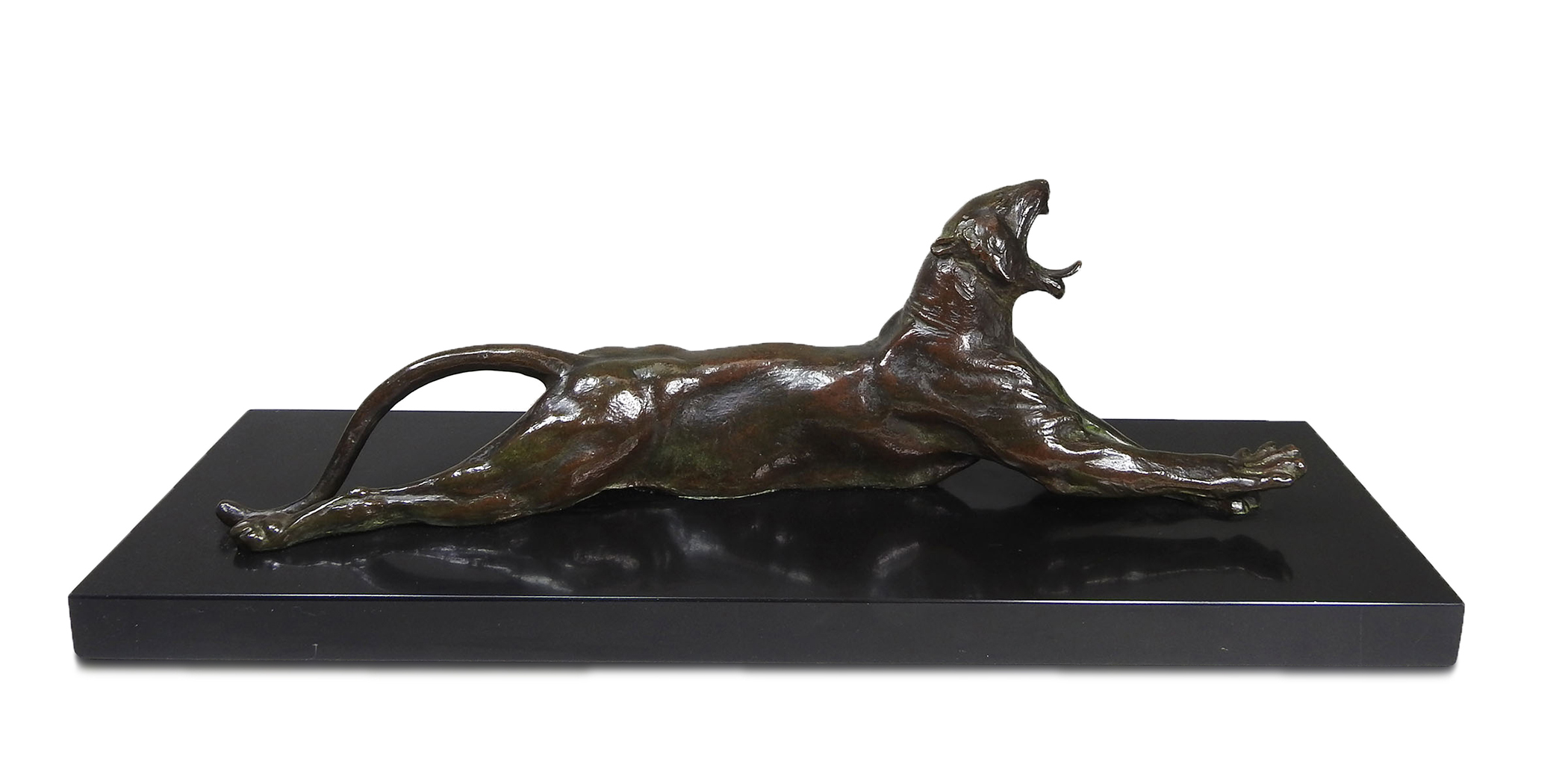
Anna Hyatt Huntington, Yawning Tiger (#251), ca. 1917, bronze
Huntington’s small-scale sculptures, such as Yawning Tiger, were created primarily for private enjoyment. The most sought-after subjects were goddesses, domestic and wild animals, and whimsical figures. These works typically decorated mantels and tabletops in the late nineteenth and early twentieth centuries.
The artist’s understanding of animal anatomy is evident in the delineated musculature of the cat’s body and limbs, the projection of movement in the open mouth and outstretched tongue, and the up-turned paws.
Museum purchase with funds provided by the John and Alice Forester Charitable Trust
Huntington’s small-scale sculptures, such as Yawning Tiger, were created primarily for private enjoyment. The most sought-after subjects were goddesses, domestic and wild animals, and whimsical figures. These works typically decorated mantels and tabletops in the late nineteenth and early twentieth centuries.
The artist’s understanding of animal anatomy is evident in the delineated musculature of the cat’s body and limbs, the projection of movement in the open mouth and outstretched tongue, and the up-turned paws.
Museum purchase with funds provided by the John and Alice Forester Charitable Trust
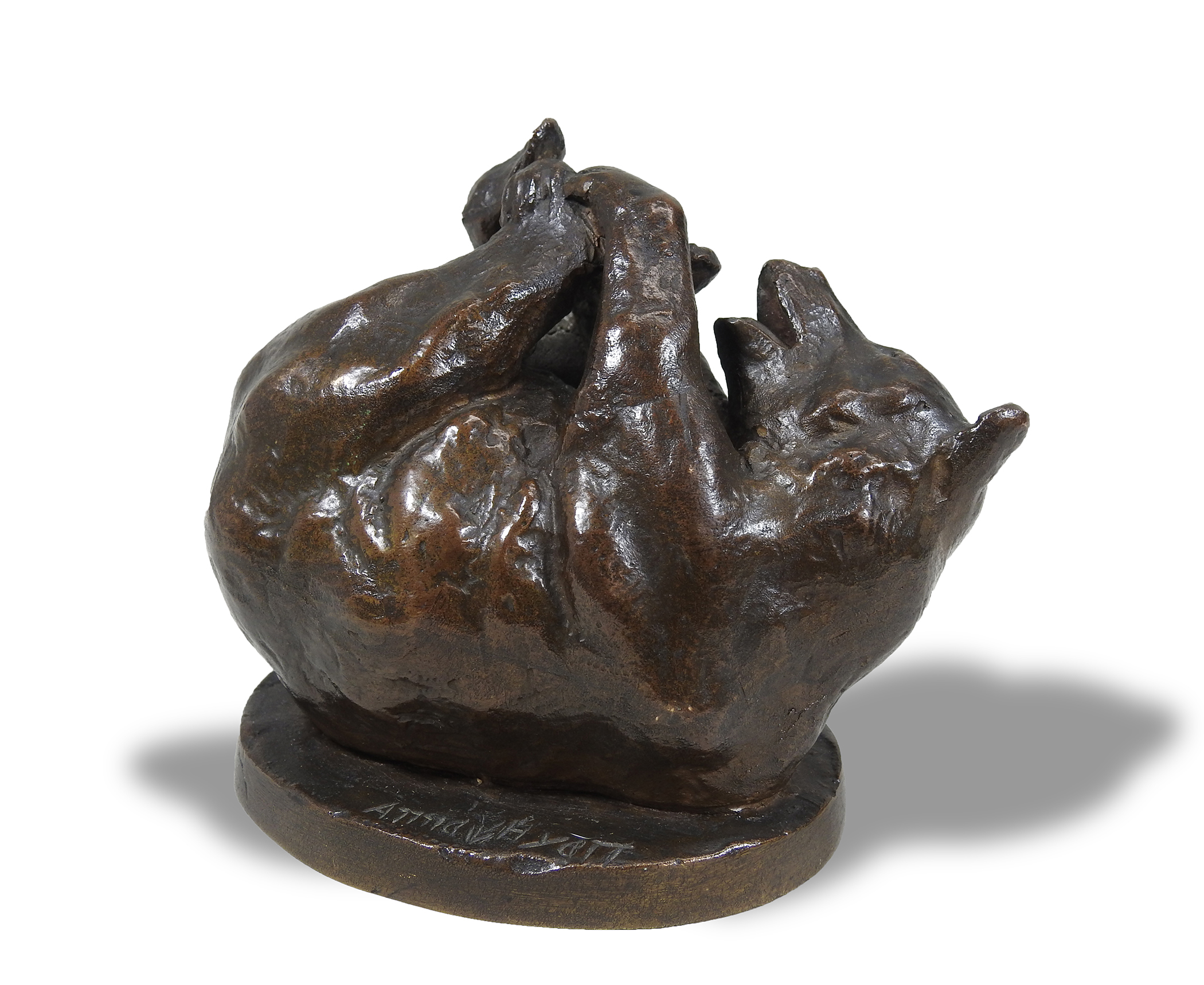
Anna Hyatt Huntington, Bear Rolling on Its Back, ca. 1910, bronze
In 1900, the Boston Arts Club exhibited forty animal sculptures by Anna Hyatt Huntington, earning the artist international recognition.
Museum purchase with Tribute Funds in memory of Linne Hage Forester
In 1900, the Boston Arts Club exhibited forty animal sculptures by Anna Hyatt Huntington, earning the artist international recognition.
Museum purchase with Tribute Funds in memory of Linne Hage Forester
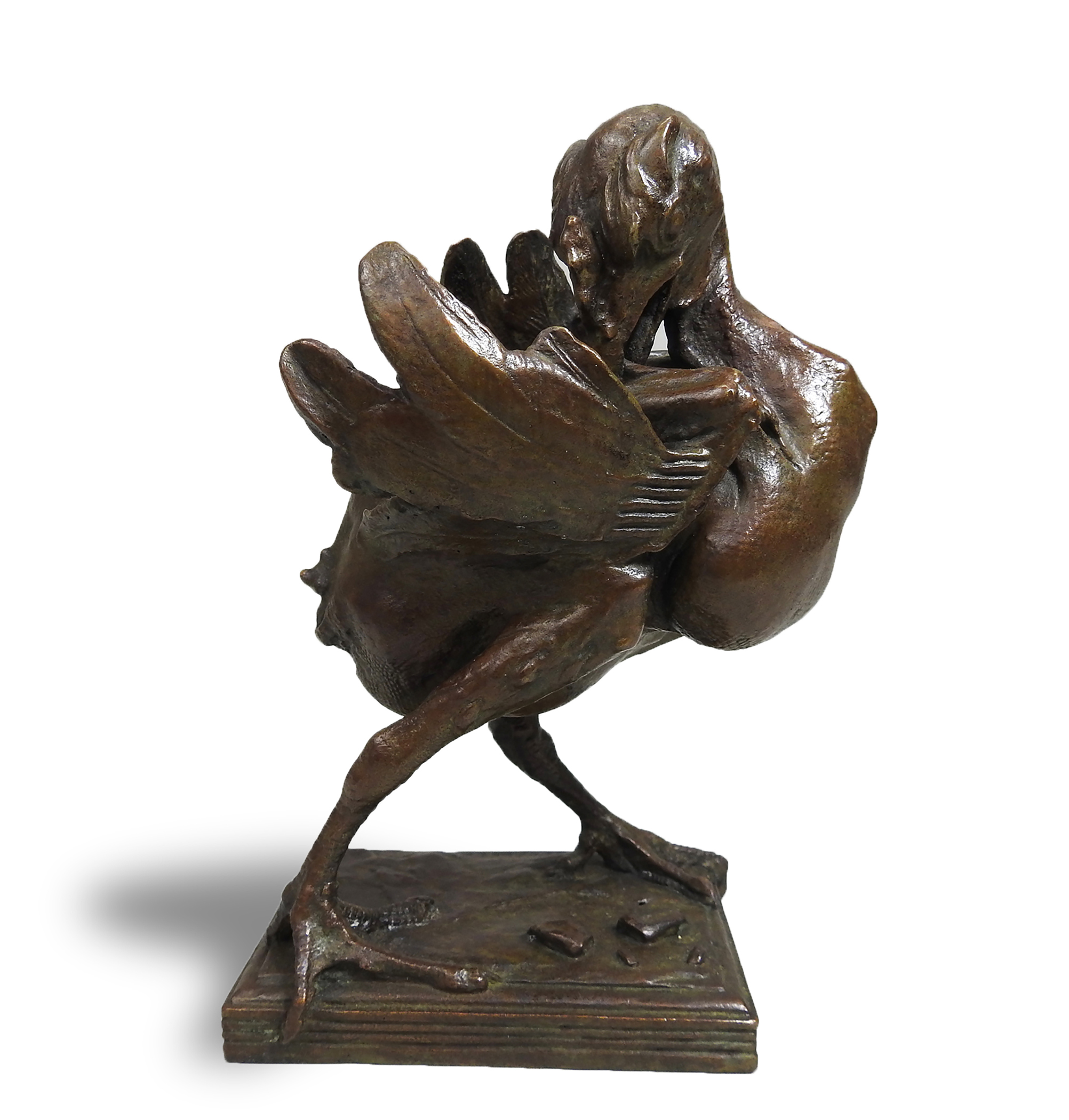
Albert Laessle, An Outcast (ed. 4), 1907, bronze
Albert Laessle, the younger of two brothers, was born in Philadelphia. His family were German immigrants; his father was a wheelwright and woodcarver and grandfather was a stonecutter. Despite the family background in crafts, Laessle’s parents didn’t support his artistic endeavors. Thankfully, his older brother Henry encouraged and financially supported him.
Laessle specialized in small-scale animal sculpture. Among his public commissions were a group of bronze penguins for the Philadelphia Zoo and Brookgreen Gardens, and a group of animals in Johnson Square, Camden, New Jersey. Museum purchase with funds provided by the John and Alice Forester Charitable Trust
Albert Laessle, the younger of two brothers, was born in Philadelphia. His family were German immigrants; his father was a wheelwright and woodcarver and grandfather was a stonecutter. Despite the family background in crafts, Laessle’s parents didn’t support his artistic endeavors. Thankfully, his older brother Henry encouraged and financially supported him.
Laessle specialized in small-scale animal sculpture. Among his public commissions were a group of bronze penguins for the Philadelphia Zoo and Brookgreen Gardens, and a group of animals in Johnson Square, Camden, New Jersey. Museum purchase with funds provided by the John and Alice Forester Charitable Trust
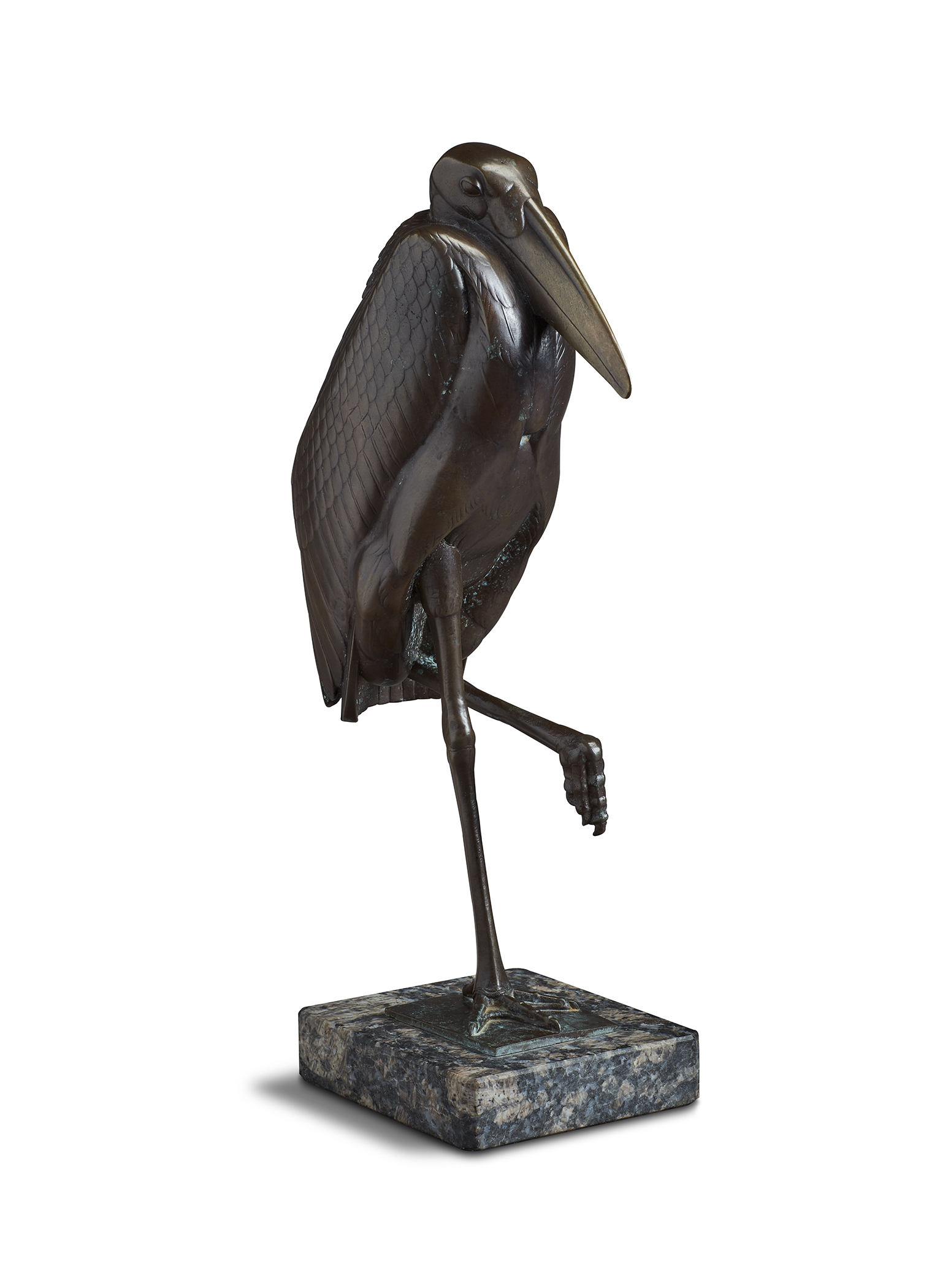
Paul Howard Manship, Adjutant Stork, 1932, bronze
At a young age, Manship developed an interest in animal sculptures, including mythical stories and characters. He became known for freely modeled forms and dramatic gestures. “I like to express movement in my figures. It’s a fascinating problem which I’m always trying to solve,” he said. He also noted, “I’m not especially interested in anatomy, though naturally I’ve studied it. And, although I approve generally of normally correct proportions, what matters is the spirit which the artist puts into his creation – the vitality, the rhythm, the emotional effect.”
Museum purchase with funds provided by the Nancy Woodson Spire Foundation
At a young age, Manship developed an interest in animal sculptures, including mythical stories and characters. He became known for freely modeled forms and dramatic gestures. “I like to express movement in my figures. It’s a fascinating problem which I’m always trying to solve,” he said. He also noted, “I’m not especially interested in anatomy, though naturally I’ve studied it. And, although I approve generally of normally correct proportions, what matters is the spirit which the artist puts into his creation – the vitality, the rhythm, the emotional effect.”
Museum purchase with funds provided by the Nancy Woodson Spire Foundation
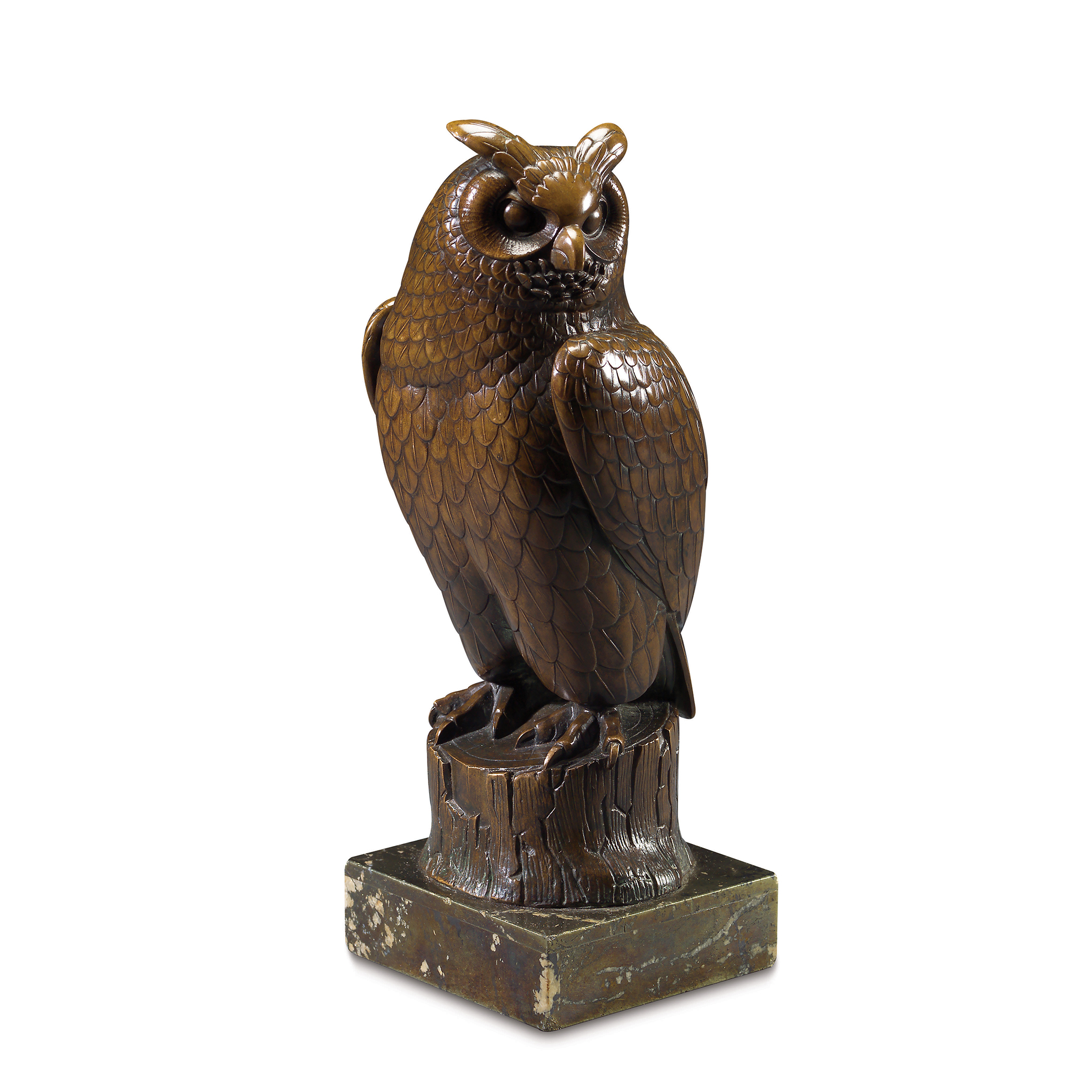
Paul Howard Manship, Owl, 1932, bronze
Manship was born in St. Paul, Minnesota, but spent most of his career on the east coast, living in New York City and Cape Ann, Massachusetts. He is recognized for the large-scale Prometheus fountain, a prominent feature of New York’s Rockefeller Center.
Modeled for the Paul J. Rainey Memorial Gateway at the Bronx Zoo, this small bronze owl is one of twenty-two animals Manship designed and modeled from life for the project in the early 1930s. This cast remained in the artist’s collection until his death.
Museum purchase with funds provided by the John and Alice Forester Charitable Trust
Manship was born in St. Paul, Minnesota, but spent most of his career on the east coast, living in New York City and Cape Ann, Massachusetts. He is recognized for the large-scale Prometheus fountain, a prominent feature of New York’s Rockefeller Center.
Modeled for the Paul J. Rainey Memorial Gateway at the Bronx Zoo, this small bronze owl is one of twenty-two animals Manship designed and modeled from life for the project in the early 1930s. This cast remained in the artist’s collection until his death.
Museum purchase with funds provided by the John and Alice Forester Charitable Trust
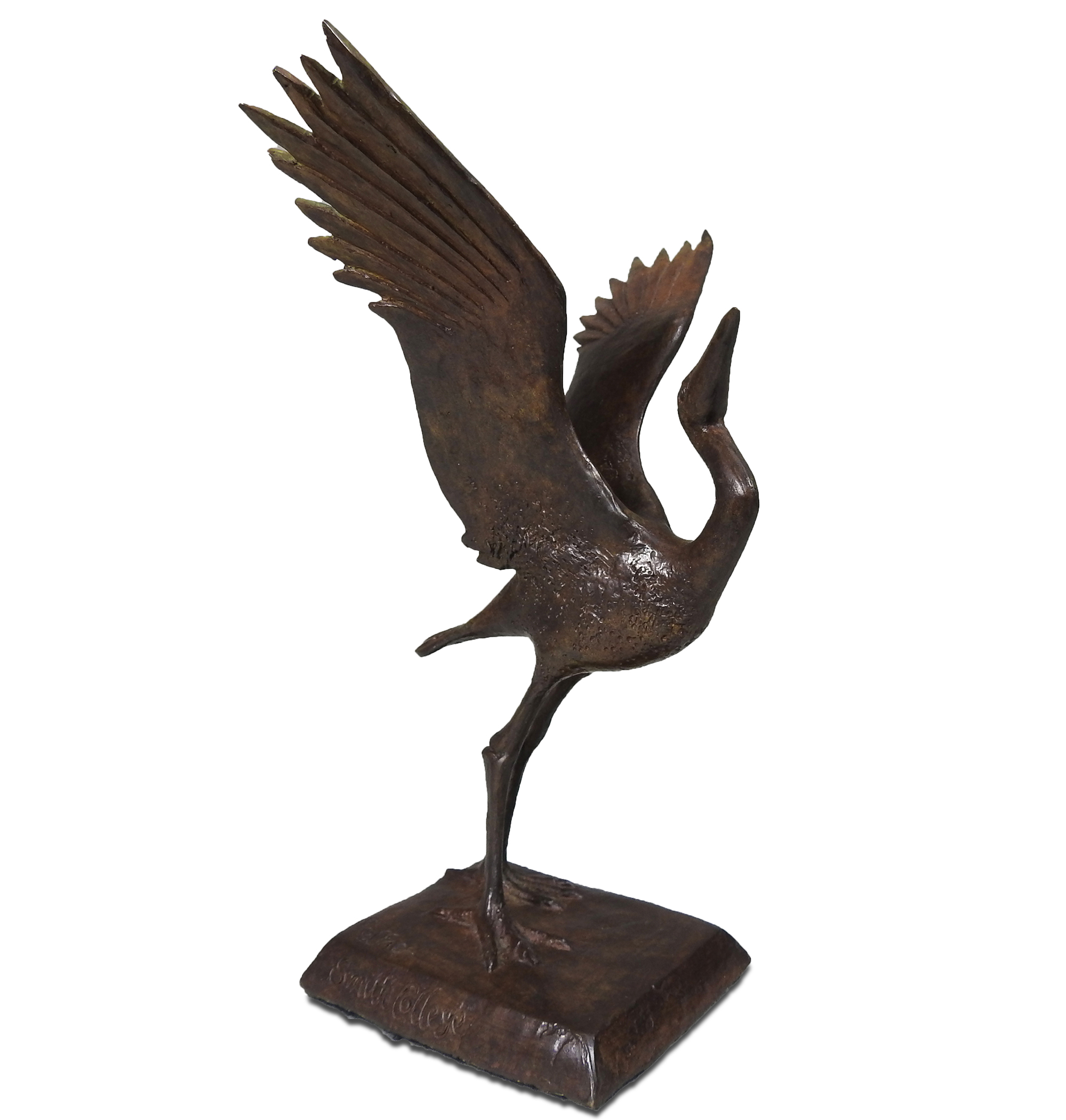
Elliot M. Offner, Great Blue Heron, ca. 1987, bronze
A master and longtime professor of realist sculpture, Offner worked in wood, clay, plaster, and bronze. In his later career, Offner focused on animals, capturing the graceful movements of birds, horses, and fish. He often spoke of the transcendence found in the natural world: “I create sculpture that is reverential and evokes a sense of grandness and beauty and spirituality through art that speaks of nature, but is not nature.”
Museum purchase with Tribute Funds
A master and longtime professor of realist sculpture, Offner worked in wood, clay, plaster, and bronze. In his later career, Offner focused on animals, capturing the graceful movements of birds, horses, and fish. He often spoke of the transcendence found in the natural world: “I create sculpture that is reverential and evokes a sense of grandness and beauty and spirituality through art that speaks of nature, but is not nature.”
Museum purchase with Tribute Funds
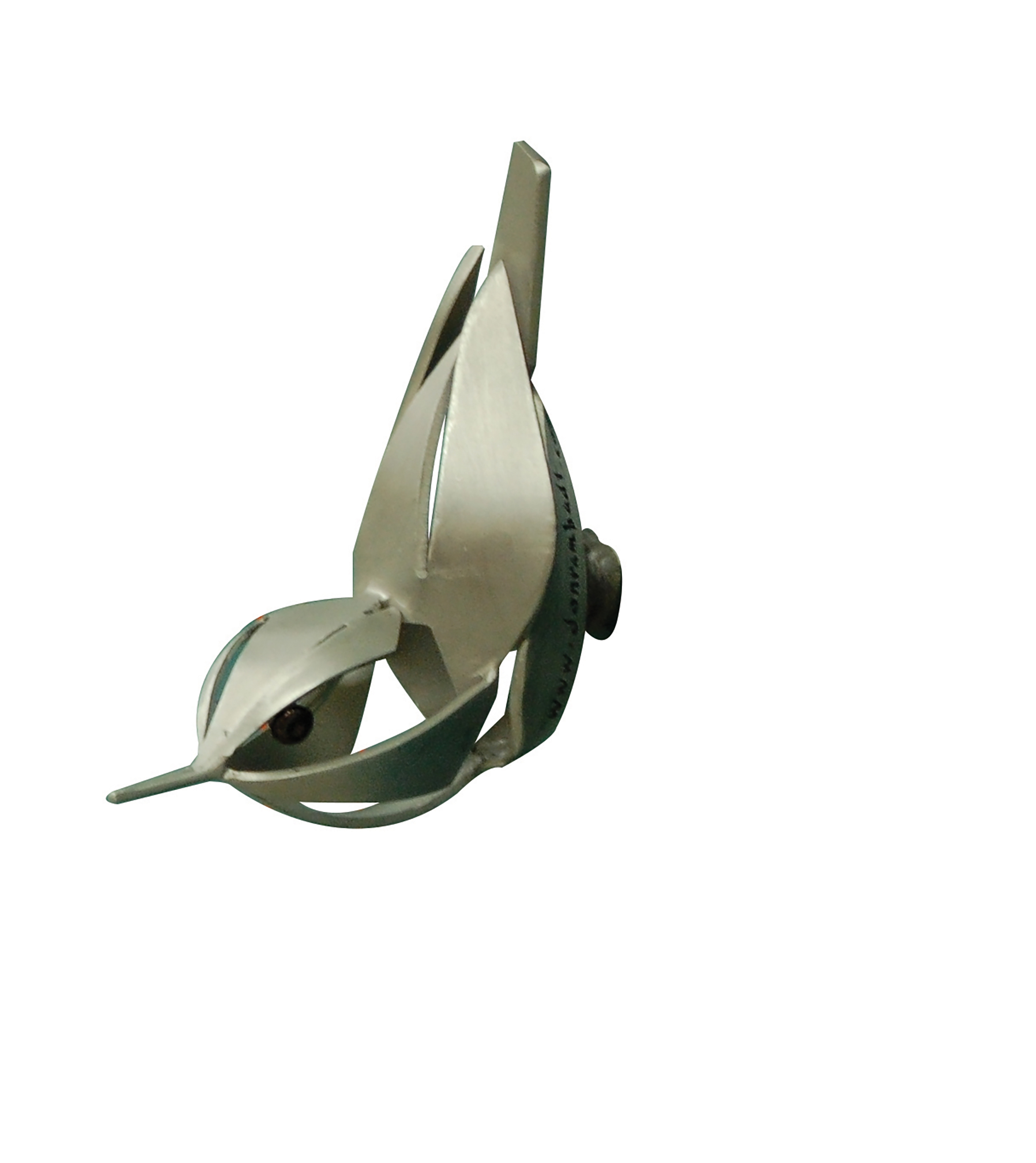
Don Rambadt, Magnetic Migration, 2011, stainless steel
Don Rambadt developed his Magnetic Migration project and its small welded steel nuthatches to spark curiosity. He initially placed the birds in cities across the country, where they could be found by walkers, hikers, and astute observers, who upon discovering and inspecting a nuthatch would be directed to the artist’s Magnetic Migration website, encouraged to photograph the sculpture as found, and then relocate it to a new site for someone else to find. For those who do as the artist intended, Rambadt sends a similar sculpture as a gift. The Woodson Art Museum’s nuthatch is no longer part of the ongoing Magnetic Migration project; it’s part of the permanent collection.
Museum purchase with Tribute Funds
Don Rambadt developed his Magnetic Migration project and its small welded steel nuthatches to spark curiosity. He initially placed the birds in cities across the country, where they could be found by walkers, hikers, and astute observers, who upon discovering and inspecting a nuthatch would be directed to the artist’s Magnetic Migration website, encouraged to photograph the sculpture as found, and then relocate it to a new site for someone else to find. For those who do as the artist intended, Rambadt sends a similar sculpture as a gift. The Woodson Art Museum’s nuthatch is no longer part of the ongoing Magnetic Migration project; it’s part of the permanent collection.
Museum purchase with Tribute Funds
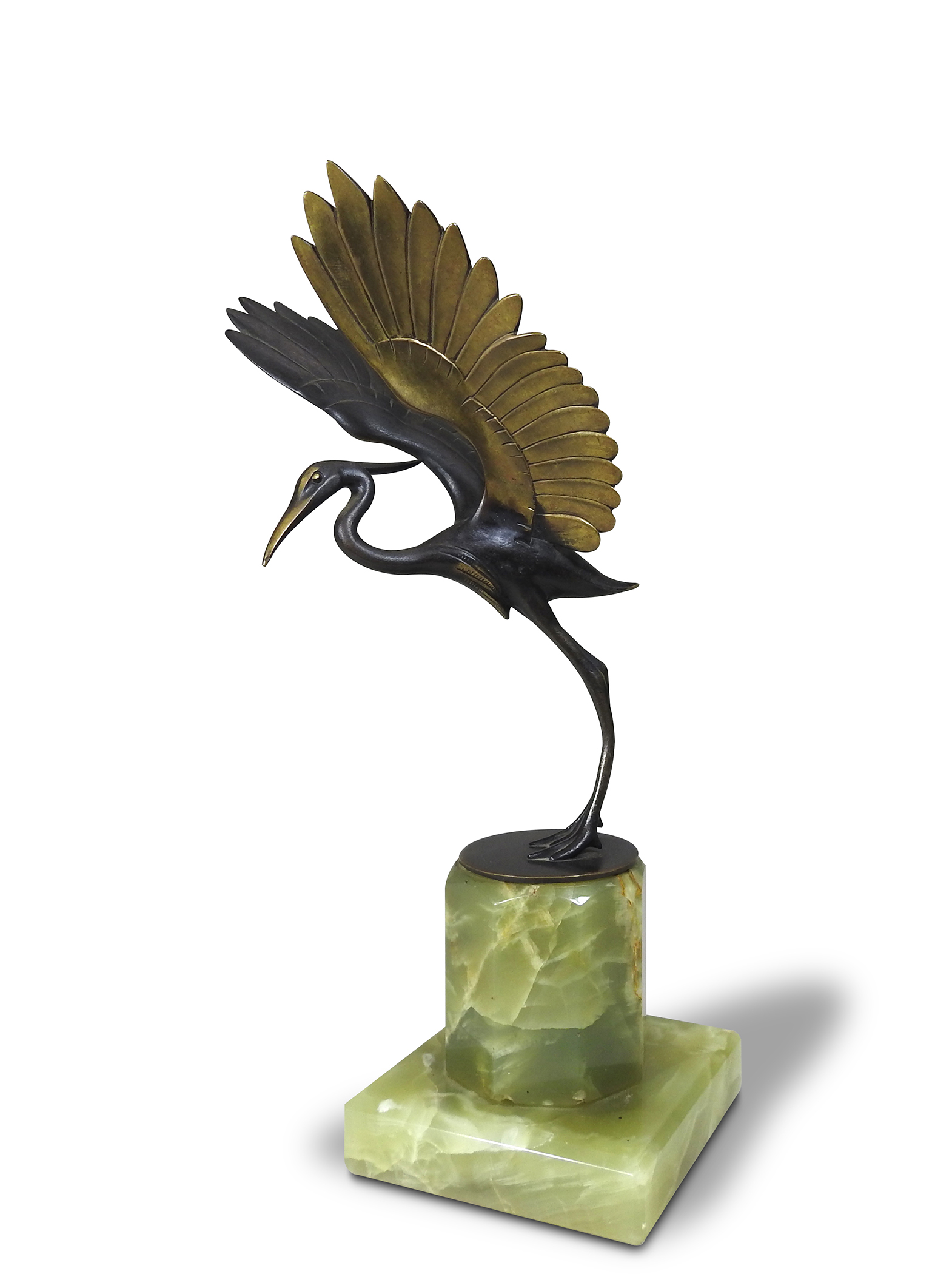
Eugenie Shonnard, Heron, 1922, bronze
Shonnard is considered a pioneer among American women animal sculptors. While her contemporaries carved with an eye toward realism, Shonnard’s subjects were stylized. Her simplified contours presented the essence and temperament of her subjects without elaborate detail. Wading birds held a special fascination for Shonnard. This heron is poised for flight, its stance emphasizing the bird’s long legs and sweeping wingspan, perhaps slightly out of perspective, but elegant nonetheless.
Museum purchase with Tribute Funds
Shonnard is considered a pioneer among American women animal sculptors. While her contemporaries carved with an eye toward realism, Shonnard’s subjects were stylized. Her simplified contours presented the essence and temperament of her subjects without elaborate detail. Wading birds held a special fascination for Shonnard. This heron is poised for flight, its stance emphasizing the bird’s long legs and sweeping wingspan, perhaps slightly out of perspective, but elegant nonetheless.
Museum purchase with Tribute Funds

Jason Stone, Owl, 1979, black walnut
Jason Stone works in wood and bronze. Among his honors is being chosen as Master Artist by the Five Civilized Tribes Museum, Muskogee, Oklahoma, in 1981. Stone’s work reveals a keen ability to capture the humorous as well as the realistic characteristics of his subjects.
Gift of Alice W. Smith and Joseph F. Smith, Jr.
Jason Stone works in wood and bronze. Among his honors is being chosen as Master Artist by the Five Civilized Tribes Museum, Muskogee, Oklahoma, in 1981. Stone’s work reveals a keen ability to capture the humorous as well as the realistic characteristics of his subjects.
Gift of Alice W. Smith and Joseph F. Smith, Jr.
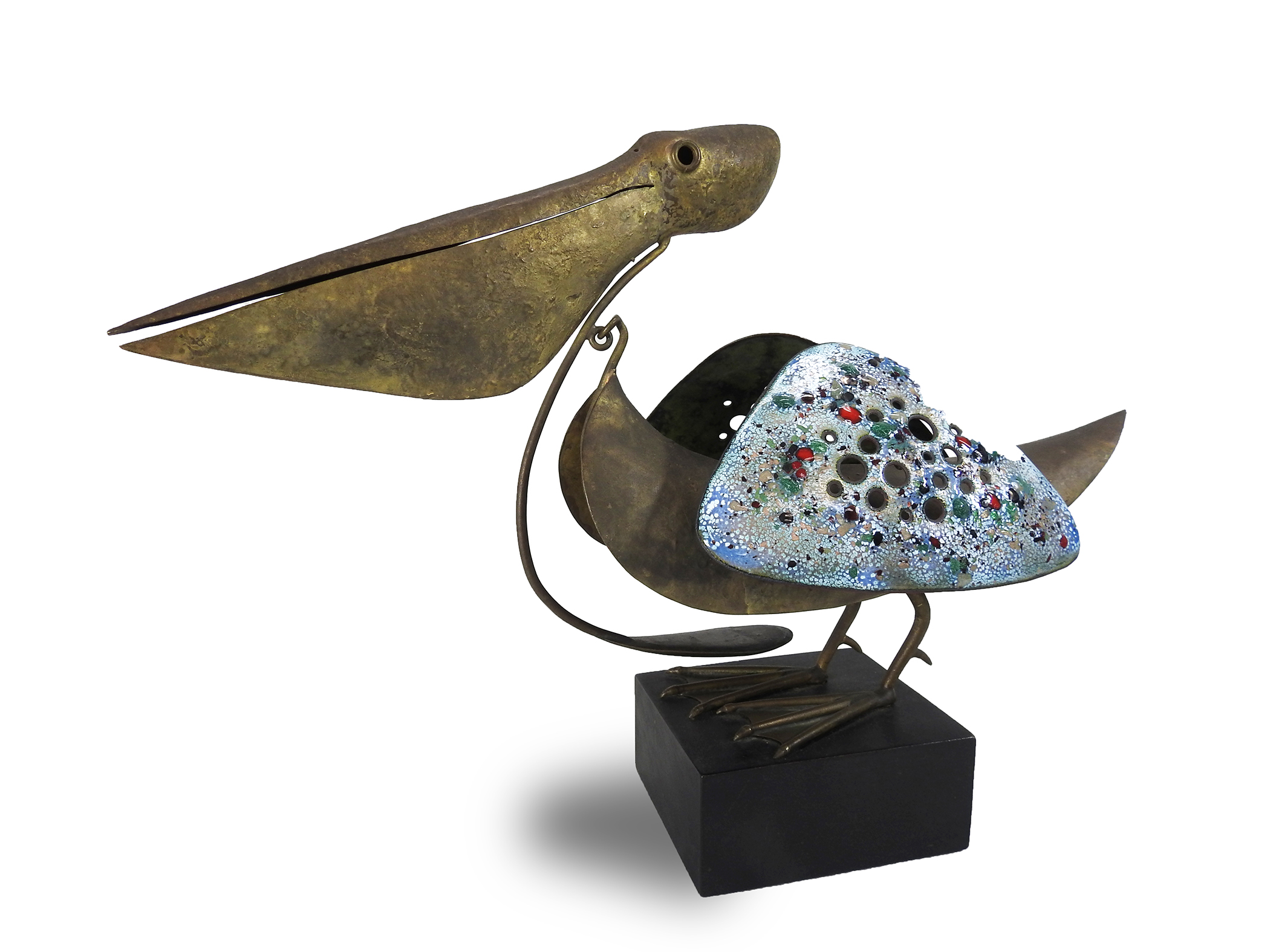
James B. Turnbull, Pelican, ca. 1957, brass, enameled brass, and lead
Although known as a realistic painter, a gift of origami papers from a visiting Japanese musician in the 1950s led Turnbull to experiment with mobiles. He abandoned painting, creating whimsical, kinetic brass animals that come alive at the touch of a finger.
Museum purchase with Tribute Funds
Although known as a realistic painter, a gift of origami papers from a visiting Japanese musician in the 1950s led Turnbull to experiment with mobiles. He abandoned painting, creating whimsical, kinetic brass animals that come alive at the touch of a finger.
Museum purchase with Tribute Funds
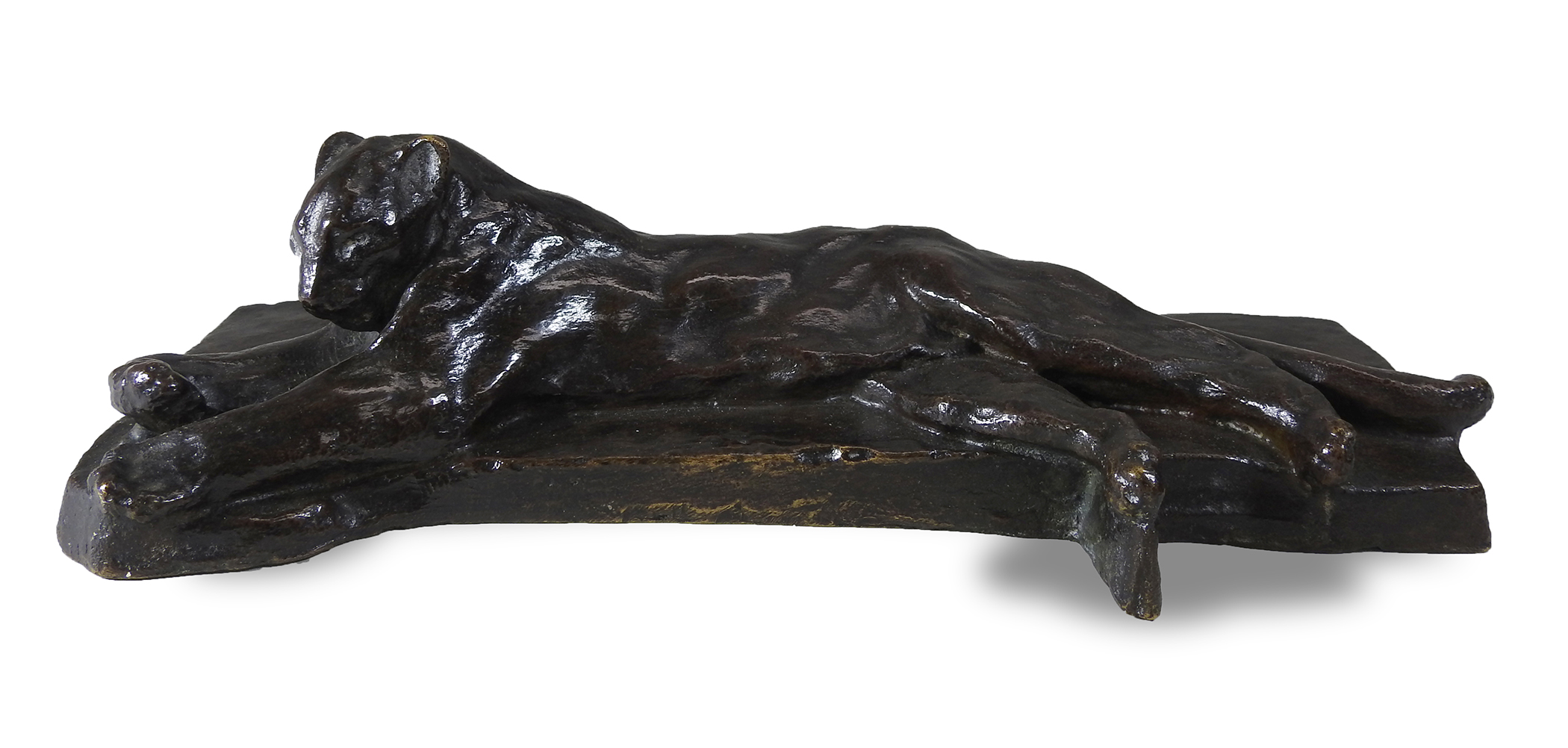
Arthur Putnam, Puma Reclining, 1908, bronze
Arthur Putnam styled pumas, bears, coyotes, and mountain lions using his knowledge of animal anatomy, an interest developed in his youth.
Putnam was intelligent but uninterested in school. His mother encouraged him to work in a photoengraving office where he learned the basics of drawing. Ultimately, the family bought a lemon ranch in San Diego, California. Arthur spent his teenage years working on the ranch and sketching the wildlife of the Southwest. He also trapped pumas for the San Diego Zoo. Putnam married in 1899; he and his wife settled in San Francisco, where by the early 1900s his work gained recognition. The California earthquake of 1906 destroyed his studio; the family lived in a tent, eventually building a house near Ocean Beach. Putnam was partially paralyzed following brain surgery in 1911. While he was able to draw, he never regained his sculpture skills.
Museum purchase with funds provided by the John and Alice Forester Charitable Trust
Arthur Putnam styled pumas, bears, coyotes, and mountain lions using his knowledge of animal anatomy, an interest developed in his youth.
Putnam was intelligent but uninterested in school. His mother encouraged him to work in a photoengraving office where he learned the basics of drawing. Ultimately, the family bought a lemon ranch in San Diego, California. Arthur spent his teenage years working on the ranch and sketching the wildlife of the Southwest. He also trapped pumas for the San Diego Zoo. Putnam married in 1899; he and his wife settled in San Francisco, where by the early 1900s his work gained recognition. The California earthquake of 1906 destroyed his studio; the family lived in a tent, eventually building a house near Ocean Beach. Putnam was partially paralyzed following brain surgery in 1911. While he was able to draw, he never regained his sculpture skills.
Museum purchase with funds provided by the John and Alice Forester Charitable Trust
